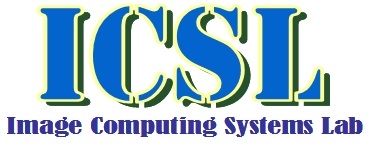Lab Name and Affiliation
|
Image Computing Systems Lab.
Dept. of Electrical Engineering, Korea Advanced Institute of Science and Technology (KAIST), Korea
|
Lab Director (or Principal Investigator)

|
HyunWook Park is a professor of the department of electrical engineering at KAIST. He served as the department head of electrical engineering at KAIST from Dec. 2005 to Jan. 2011, and he is now associate VP of academic affairs in KAIST. He received the BS degree in electrical engineering from Seoul National University, Seoul, Korea in 1981 and the MS and PhD degrees in electrical engineering from Korea Advanced Institute of Science and Technology (KAIST), Seoul, Korea in 1983 and 1988, respectively. He has been a professor of electrical engineering department since 1993 and an adjunct professor of bio and brain engineering department since 2003, KAIST, Korea. He was a research associate at the University of Washington from 1989 to 1992 and was a senior executive researcher at the Samsung Electronics Co. Ltd., from 1992 to 1993. He is a senior member of IEEE. He has served as Associate Editor for International Journal of Imaging Systems and Technology. His current research interests include image computing system, image compression, medical imaging, and multimedia system.
|
Lab Introduction

|
Image Computing Systems Laboratory (ICSL) in KAIST was established in Seoul campus in 1993 and moved to Daejeon campus in 1996. As of fall in 2013, we have 74 alumni (28 for Ph.D. and 46 for M.S) and now 16 Ph.D. candidates and 7 master course students are studying.
Research field of Image Computing Systems Laboratory (ICSL) includes medical imaging, automatic target recognition, and video processing.
In the medical imaging area, we are developing new parallel MR imaging techniques, which can have high spatial and temporal resolution images in a limited imaging time. Brain function studies have been also performed by using BOLD response in the functional magnetic resonance imaging (fMRI) data. In addition, we have designed RF coil for effectively receiving NMR signals and RF circuit for improving SNR.
In the research of automatic target recognition, we have studied robust multiple target tracking. In order to tract small targets with a cluttered background and an abrupt motion change, we proposed a filtered spatio-temporal prediction using adaptive visual similarity adjustment based on the human object recognition process.
Frame rate up-conversion is also our interesting research field. In order to generate intermediate frames between successive frames, we developed a symmetric motion estimation technique, which was our own pixel-wise motion estimation method for intermediate frame interpolation.
|
Lab Contact E-mail
Lab URL
|